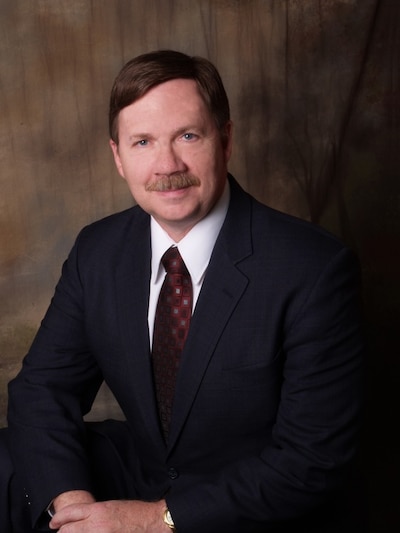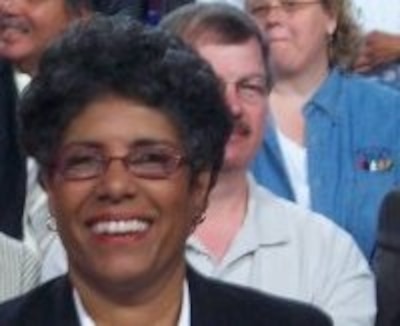John Barry’s next “to do” list has some pretty daunting chores on it.
Things like getting 100 percent of his students performing at grade level within five years of enrollment; revising graduation requirements so that members of the Class of 2015 must already be earning college credit before they graduate from high school; creating a first-of-its-kind-in-the-nation campus to meet the educational needs of everyone from pre-schoolers to college underclassmen; and implementing a school-wide bonus pay program based on student achievement.
But the superintendent of Aurora Public Schools likes to point out that 3 ½ years into his current 5-year-year plan for the district, Vista 2010, he’s already been able to cross off – or at least make substantial progress on – 93 percent of those goals.
“Any time you’re over 90 percent done, it’s time to start thinking about your next strategic plan,” he says.
So back in the fall, Barry kicked off a 180-day “listening tour” to promote and get feedback on his latest vision of what the school district could be five years from now.

One hundred and four meetings later, Barry has taken his Vista 2015 spiel to PTAs, to civic clubs, to the city council, to university regents, to neighborhood associations, to APS faculty and staff, to churches. In short, if it’s a group, and it meets in Aurora, chances are good Barry or another school district official has come calling.
With the final such group presentation now behind them, district officials will take the rest of this month to process and analyze all the comments they’ve heard, and they’ll spend April tweaking Vista 2015 to reflect that feedback. They’ll put out a final draft by May, then host a few more town hall meetings and online surveys to give folks a final shot at providing input. Barry figures he’ll have something ready to present to the school board by its first meeting in August.
Talking and listening
Certainly no one can accuse the superintendent of operating in a vacuum, even if some do accuse him of doing more talking than listening on the listening tour. Teachers’ union leaders, in particular, complain their concerns about parts of the plan are being heard. Barry insists that’s not true.
“When you look at all we’ve done under Vista 2010, those ideas weren’t generated from the top, but from the collaborative input of hundreds of people,” Barry insists. “In 2006, we did a 90-day listening tour before we launched Vista 2010. Because we have more time this go-round, we’ve extended it to 180 days.”
Indeed there was a greater sense of urgency in Aurora schools back in 2006. The district, with an ever-increasing number of English-language learners and students living in poverty, was performing abominably on standardized tests, and things seemed headed in the wrong direction. Barry, a retired Air Force general, was hired as superintendent that year, in hopes his non-traditional background could turn things around for the struggling district.
Within a few months, he’d created the Vista 2010 plan, which identified 13 goals, 34 objectives and 97 specific tasks he hoped to accomplish. After a couple of revisions, that was edited down to 12 goals, 30 objectives and 65 specific tasks.
Among them: Adopting a new K-12 literacy curriculum; developing pacing guides to help teachers know what to cover and when; adding a “fifth block” of 23 more days of instruction for students during the summer; the creation of pilot schools; the development of a more comprehensive anti-truancy program.
Today, district officials judge 56 percent of those tasks to have been completed, and another 37 percent to be nearly so. They count just 7 percent on which they’ve made little or no progress.
District earns a “B+”
Barry gives the district a B+ for its efforts. And CSAP scores – often the most public measurement of how a school district is doing – have improved dramatically. In 2009, APS outperformed the state and most other large school districts in overall growth in reading, writing and math, and showed especially heartening improvements among its students living in poverty.
As for the tasks still unaccomplished, Barry says to be patient. “There are trailing indicators and leading indicators in any strategic plan,” he says. “The leading indicators, we’ve made success on.”
Some of the “trailing indicators” –ACT scores, graduation rates. the number of students enrolling in college – haven’t shown much improvement. But Barry says that will change as older students move on and younger students – the ones who will have had more years in the new-and-improved Aurora Public School system – move up and start taking those tests and start planning their post-high school lives.
Those items that haven’t yet been successfully addressed are among the carryover items included among the 10 goals, 27 objectives, and 89 specific actions that are outlined in the working draft of Vista 2015.
Barry says the one thing in the draft plan that excites him most is the P-20 campus the district is building, and the career pathways programs that will be available to students there – and eventually be available to students throughout the district.
“We’re developing a pathways plan in our schools – elementary, middle and high schools – that’s unique in the nation,” he says. “It will manifest itself first in the P-20 campus.”
A P-20 campus
The Vista Peak Campus, at 24551 E. 1st Ave., is currently under construction. A school housing pre-school (that’s the “P” in P-20) through eighth grade will open this fall, and a high school will open in 2011, starting with a freshman class. By the time those high schoolers are seniors, the district expects to be able to offer them the chance to enroll in college classes, taught on-site, and even the opportunity to earn both a high school diploma and an associate’s degree. Barry doesn’t think it’s out of the question to plan for the day that adjunct faculty and higher education professors could teach upper-level college-level and even graduate-level classes on the campus. (That’s the 13-20 part of p-20.)
In the meantime, students at the school would choose one of four “pathways” based on their career and academic plans. Those pathways: health sciences; STEM (science, technology, engineering and math); business and marketing; and fine arts, humanities and design.
“We’re not hiring principals at the P-20 campus,” Barry says. “We’ll have pathway directors responsible for each pathway. It will be a unique campus. And we will export what we learn from our P-20 campus to every one of our schools. All middle and high schools will have all four pathways eventually.”
Linda Bowman, president of the Community College of Aurora and a member of Barry’s advisory board, says she shares his enthusiasm about linking the school district to post-secondary institutions. “We are partners in making that happen,” she said. “We believe that for so many of our students, if we don’t identify them early and give them opportunities early, they probably will not have the chance to go on to college at all. But we know from national research, if someone starts to think of himself or herself as college material, and the family starts to think that way too, then remarkable things can happen.”
Bowman says she’s seen the Vista 2015 presentation so many times now, she figures she could probably go on tour herself with it. She judges the community response to it as positive. “People are eager to acknowledge the kind of progress the district has made over past three to four years, and they’re very vocal that we not lose our momentum,” Bowman says. “I think some people are almost surprised at the total commitment. The district is asking all the right questions, and asking the community what we want and what we’re willing to commit to.”
Teachers’ union balks

But another important player isn’t nearly as positive. Brenna Isaacs, president of the Aurora Education Association, says teachers have two huge concerns: the bonus pay proposal, and the proposal to link teacher job evaluations to student performance.
“We have a negotiated agreement and salary schedule,” says Isaacs. “Given the current fiscal situation, teachers really question why we would be looking at using resources (to fund bonus pay) instead of trying to use those resources to enhance and create a better salary schedule for everyone so we could recruit better teachers to Aurora.”
Isaacs said surveys of district teachers have repeatedly shown the majority to be averse to such a plan, so she was surprised to see it included in the draft of Vista 2015.
“It’s something the superintendent wants, and for whatever reason he thinks it will incent and encourage teachers to work more collaboratively,” she says. “But our belief is that doesn’t work. And teachers see a lot of potential for favoritism to work its way into those structures. And it will be based on student performance, so you’re trying to incent individuals to work harder, run faster, leap over tall buildings in a single bound, as though they’re not doing that right now!
“Teachers want good working conditions, good resources and time and to work with the students they’re charged to work with. That’s more incentive than any bonus pay plan.”
